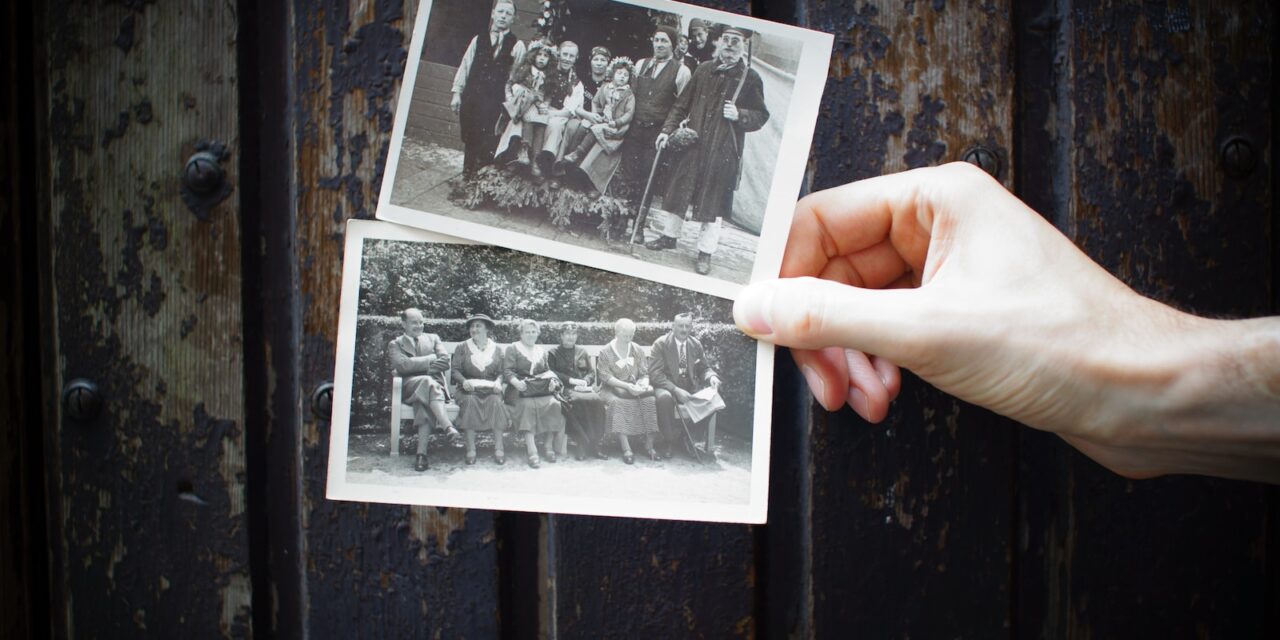Creating a family tree is not merely an exercise in tracing lineage; it is a powerful tool that allows you to embark on a journey of self-discovery, unravelling the tapestry of your past and gaining a deeper understanding of your roots and heritage. By delving into the branches of your family tree, you can uncover fascinating stories, traditions, and connections that have shaped your identity and influenced your family’s narrative.
One of the primary reasons why creating a family tree holds significance is their ability to provide a sense of belonging and identity. Knowing where you come from and understanding your ancestral background can foster a stronger connection to your heritage and cultural roots. It allows you to appreciate the experiences and struggles of your ancestors, cultivating a profound sense of pride and respect for the journey that brought you to the present.
Creating a family tree also serves as a repository of memories and stories, preserving the legacy of your ancestors for future generations. By documenting names, dates, and important milestones, you create a living record that carries forward the history and traditions of your family. These stories become the threads that weave together the fabric of your lineage, passing down valuable insights, wisdom, and values to your children, grandchildren, and beyond.
Moreover, creating a family tree can uncover hidden connections and shared experiences with relatives you may have never known existed. It has the power to bridge gaps and bring together long-lost branches of your family, fostering a sense of kinship and community. Reconnecting with distant cousins or discovering relatives in far-flung corners of the world can open doors to new relationships and a support network that transcends geographical boundaries.
Beyond personal fulfillment, family trees also contribute to the collective understanding of history and society. They offer a microcosm of the broader human story, reflecting migrations, cultural exchanges, and societal transformations over generations. Your family’s narrative becomes intertwined with the larger tapestry of human history, and your research and discoveries can contribute to the body of knowledge in genealogy and historical research.
Table of Contents
GATHERING VITAL INFORMATION: UNLOCKING THE SECRETS OF YOUR ANCESTORS
When embarking on a journey to trace your family’s history, gathering vital information becomes the key to unlocking the secrets of your ancestors. By following essential steps and documenting crucial details, such as birth certificates, marriage records, and other historical documents, you can piece together a comprehensive and accurate picture of your family’s lineage.
The first step in gathering vital information is to start with what you already know. Begin by compiling information about your immediate family, such as names, dates of birth, and places of residence. Speak with older relatives who may have first-hand knowledge or stories that can offer valuable clues to your family’s past.
With this foundation in place, it’s time to expand your search by delving into official records and documents. Birth certificates, marriage records, and death certificates are essential resources for verifying and establishing connections between family members. These vital records not only provide factual data but also offer insights into significant life events that shaped your ancestors’ lives.
Local government offices, such as county clerks or registrars, are often the primary sources for obtaining vital records. Many have online databases or physical archives where you can access documents or request copies. Be prepared to provide relevant details, such as names, dates, and locations, to facilitate your search.
Apart from official records, other historical documents can provide a wealth of information. Census records, for example, offer a snapshot of your ancestors’ lives, revealing details such as their occupations, addresses, and family members. Immigration and naturalization records can shed light on your family’s migration patterns, providing a glimpse into their journeys to new lands.
Religious institutions, such as churches and synagogues, often keep baptismal records, marriage registers, and burial records. These documents can be invaluable in tracing your family’s religious and cultural heritage, particularly if official records are scarce or incomplete.
Newspapers also serve as valuable resources for capturing important moments in your family’s history. Birth announcements, wedding notices, obituaries, and articles chronicling notable achievements can offer a vivid glimpse into your ancestors’ lives and the communities they were part of.
As you gather vital information, it’s crucial to document and organize your findings systematically. Create a dedicated folder or digital file for each ancestor, keeping track of the sources you’ve consulted and the information you’ve discovered. This organization ensures accuracy, helps you avoid duplication of efforts, and facilitates future research.
Remember, the process of creating a family tree and gathering vital information is an ongoing one. New records may become available, and technological advancements, such as digitization projects, continually expand access to historical documents. Stay vigilant and regularly revisit your research to uncover hidden gems and fill in missing pieces of the puzzle.
By diligently gathering and documenting vital information, you open doors to a treasure trove of knowledge about your ancestors. Step by step, each record and document brings you closer to understanding their lives, their triumphs, and their struggles. So, embrace the journey of discovery, armed with determination and curiosity, and unlock the fascinating world of your family’s past.
UTILIZING ONLINE GENEALOGY RESOURCES: UNCOVER YOUR FAMILY’S PAST WITH EASE
In the digital age, the wealth of online genealogy resources at our fingertips has revolutionized the way we explore and understand our family history. By harnessing the power of ancestry websites, historical databases, and DNA testing services, you can embark on an exciting journey to uncover valuable information about your ancestors and piece together your family’s unique story.
Ancestry websites, such as Ancestry.com (www.ancestry.com), offer a vast collection of records, documents, and family trees contributed by millions of users worldwide. These platforms provide access to historical records such as birth, marriage, and death certificates, census data, military records, immigration records, and more. By inputting the names of your ancestors and exploring their databases, you can discover previously unknown relatives, trace family migrations, and gather a comprehensive understanding of your family’s lineage.
Another invaluable resource is FamilySearch (www.familysearch.org), a free genealogy platform maintained by The Church of Jesus Christ of Latter-day Saints. With billions of records spanning various countries and time periods, FamilySearch offers an extensive collection of birth, marriage, death, and census records, as well as digitized historical documents and family trees submitted by users. The collaborative nature of the platform allows you to connect with other researchers and potentially collaborate on shared ancestors.
For those seeking to delve deeper into their genetic origins, DNA testing services like 23andMe (www.23andme.com) and AncestryDNA (www.ancestrydna.com) can provide fascinating insights. By submitting a DNA sample (typically saliva), these services analyze your genetic markers and compare them to a vast database to identify potential relatives and determine your ethnic origins. DNA testing can uncover unexpected connections, help break down brick walls in your research, and provide a more comprehensive understanding of your ancestral heritage.
In addition to these dedicated genealogy websites, numerous historical databases and archives offer valuable resources for tracing your family history. Websites like FamilySearch’s Catalog, the National Archives (www.archives.gov), and Library and Archives Canada (www.bac-lac.gc.ca) provide access to a wide range of historical records, photographs, maps, and government documents that can shed light on your ancestors’ lives and the eras they lived in.
It’s important to approach online genealogy research with a critical eye, verifying information through multiple sources and cross-referencing data to ensure accuracy. Collaborative platforms like Geni (www.geni.com) and WikiTree (www.wikitree.com) allow you to connect and collaborate with other researchers, benefitting from their expertise and collective knowledge.
As you embark on your journey, remember that patience and persistence are key. Genealogy research can be a thrilling but sometimes challenging endeavor, requiring careful analysis, thorough documentation, and a willingness to adapt your search strategies. But with the vast array of online resources available at your disposal, uncovering your family’s past has never been more accessible or rewarding.
INTERVIEWING FAMILY MEMBERS: UNVEILING THE RICH TAPESTRY OF YOUR FAMILY’S STORY
When it comes to uncovering the intricate threads of your family’s story, few resources are as valuable as the memories and personal experiences of your older family members. By utilizing effective techniques for interviewing these cherished individuals, you can gather a wealth of personal stories, memories, and details that will enrich your family tree and provide invaluable insights into your heritage.
Approaching these interviews with sensitivity, respect, and genuine curiosity is key to unlocking the treasure trove of information held by your loved ones. Consider the following techniques to make the most of these precious conversations:
- Create a comfortable and relaxed atmosphere: Choose a quiet and comfortable setting where your family member feels at ease. This could be their home, a cozy corner of your own living room, or a peaceful outdoor spot. Providing a relaxed environment encourages open and honest conversations.
- Plan your questions but be flexible: Prepare a list of questions in advance to guide your conversation. Start with broad topics, such as their childhood, education, and early memories, before diving into more specific aspects of their lives. However, be prepared to go with the flow and allow the conversation to take unexpected turns that may reveal unexpected gems.
- Listen actively and attentively: Show genuine interest in their stories and actively listen to what they have to say. Avoid interrupting and give them the space to express themselves fully. Nonverbal cues, such as maintaining eye contact and nodding, convey your engagement and encourage them to share more.
- Ask open-ended questions: Rather than seeking simple yes or no answers, ask questions that encourage detailed responses. For example, instead of asking, “Did you enjoy your childhood?” inquire, “Can you describe some of your fondest childhood memories and what made them special?”
- Encourage storytelling: Prompt your family member to recount specific events, anecdotes, and personal stories. Encouraging them to share their experiences in narrative form brings their memories to life and allows you to gain a deeper understanding of their unique journey.
- Capture their voice and emotions: Pay attention to the way they speak and the emotions they express. These elements add richness and depth to their stories. Consider recording the interview (with their permission) to preserve their words, intonations, and emotions for future generations.
- Respect boundaries: Some family members may be more reserved or hesitant to discuss certain topics. Respect their boundaries and allow them to share what they feel comfortable sharing. Revisit sensitive topics gently and gradually as trust develops over time.
- Follow up with additional questions: After the initial interview, review your notes or recording and identify areas that require further clarification or exploration. Follow up with additional questions during subsequent conversations to delve deeper into specific aspects of their lives.
- Express gratitude and document the information: Show gratitude for their time and willingness to share their stories. Take diligent notes during or after the interview to document the information accurately. Organize the collected material, linking it to the relevant individuals in your family tree.
- Share the knowledge and stories: As you uncover these valuable insights, share the stories and information with other family members. It strengthens the bond within your family, preserves the collective memory, and encourages further exploration and contributions from others.
By approaching interviews with older family members with genuine curiosity and respect, you can unlock the rich tapestry of your family’s story. Their personal stories, memories, and details will not only enrich your family tree but also provide a deeper understanding of your heritage and the experiences that shaped your family’s unique identity. So, embark on this journey of discovery, and let the voices of your loved ones paint a vivid picture of your family’s past.
ORGANIZING AND CREATING YOUR FAMILY TREE: WEAVING THE THREADS OF YOUR LINEAGE
As you delve deeper into the exploration of your family’s history, organizing your family tree becomes essential to create a visually appealing and comprehensive representation of your lineage. Various approaches and tools, ranging from software programs to online platforms and traditional paper-based methods, can help you weave the threads of your ancestry into a cohesive and easily navigable structure.
- Software Programs: Genealogy software programs offer robust features and convenient organization tools to build and manage your family tree digitally. Popular options include Family Tree Maker, Legacy Family Tree, and Gramps. These programs allow you to input and link family members, record vital information, attach documents, and visualize relationships through charts and reports.
- Online Platforms: Online platforms provide a collaborative and accessible environment for organizing your family tree. Websites like Ancestry.com, MyHeritage, and Geni offer user-friendly interfaces, vast databases of records and family trees, and the ability to connect with other researchers. These platforms often provide tools to create, edit, and share your family tree while benefiting from the collective knowledge and contributions of the community.
- Traditional Paper-Based Methods: For those who prefer a tactile and tangible approach, traditional paper-based methods can be a fulfilling way to organize your family tree. Start with a large poster board or a dedicated notebook and use pencils, pens, and markers to sketch out your lineage. Color coding, symbols, and lines help illustrate connections and relationships. You can also add photographs, handwritten notes, and documents for a personal touch.
- Visual Charts and Diagrams: Visual representation plays a crucial role in organizing your family tree. Create visually appealing charts and diagrams that showcase the interconnections and generations of your ancestors. Pedigree charts, descendant charts, and fan charts are popular options. These can be created using genealogy software, online platforms, or even graphic design tools like Canva or Microsoft PowerPoint.
- Timelines: Timelines offer a dynamic way to showcase your ancestors’ life events and illustrate how their stories intertwine. Create a timeline for each ancestor, documenting significant milestones, such as births, marriages, and deaths, along with notable historical events that influenced their lives. Timelines provide a contextual framework and help you understand your family’s place within the broader historical landscape.
- Notekeeping and Documentation: Maintaining thorough notes and documenting your research is vital for an organized family tree. Establish a system for recording sources, citations, and the reasoning behind your conclusions. Whether using digital tools like Evernote or OneNote, or traditional methods like a research journal, consistent notekeeping ensures accuracy, allows for future reference, and facilitates collaboration with other researchers.
- Collaborative Family Trees: Consider collaborating with other family members or researchers who share common ancestors. Online platforms like Geni or WikiTree allow multiple contributors to work on the same family tree, making it a collective effort. Collaboration enhances accuracy, fills gaps in information, and fosters connections with distant relatives.
- Regular Updates and Backups: As you continue your genealogical journey, remember to regularly update your family tree to reflect new discoveries and changes. Set aside dedicated time to review and validate information, correct errors, and expand your research. Additionally, create backups of your digital files or make copies of your paper-based records to safeguard your hard work.
By choosing the approach and tools that suit your preferences, you can transform the raw data of your family’s history into an organized, visually appealing representation of your lineage. Embrace the flexibility and convenience offered by digital solutions or revel in the nostalgia of traditional methods—it’s all about finding the method that helps you tell the story of your ancestors in a way that resonates with you. So, gather the threads, connect the dots, and watch your family tree come alive with the rich tapestry of your heritage.
PRESERVING AND SHARING YOUR FAMILY LEGACY: PASSING THE TORCH OF ANCESTRAL DISCOVERIES
Once you’ve painstakingly finished creating a family tree and delved into the depths of your ancestry, it’s crucial to preserve and share your family legacy for future generations. By employing various techniques, such as digitizing photographs and documents, creating a family website, and connecting with other genealogists and researchers, you can ensure that your research findings are safeguarded and that your family’s story continues to be celebrated.
- Digitizing Photographs and Documents: Preserve precious family photographs and documents by digitizing them. Use a scanner or a smartphone with a high-resolution camera to create digital copies. Organize these digital files in a structured manner, labeling them with relevant names, dates, and descriptions. Back up your digital collection to external hard drives or cloud storage services to protect them from loss or damage.
- Creating a Family tree Website: Share your family’s story by creating a dedicated family website. Numerous platforms, such as WordPress, Wix, or Weebly, offer user-friendly website builders that require no coding knowledge. Include a visually appealing design, an overview of your family tree, narratives about notable ancestors, and sections for photographs, documents, and stories. Encourage family members to contribute their own memories and insights, fostering collaboration and engagement.
- Blogging: Start a genealogy blog to document your research journey and share intriguing discoveries. Write engaging articles about specific ancestors, interesting historical events, or methodologies you’ve employed during your research. Incorporate personal anecdotes and reflections to make the stories relatable. Engage with the genealogy community by commenting on other blogs and participating in blog link-ups to broaden your reach.
- Utilizing Social Media: Leverage the power of social media platforms to connect with other genealogists, share your findings, and reach a wider audience. Create dedicated accounts on platforms like Facebook, Instagram, or Twitter to share photographs, stories, and research updates. Join genealogy groups and communities to exchange information, seek assistance, and collaborate on ancestral discoveries.
- Connecting with Other Genealogists and Researchers: Build connections with fellow genealogists and researchers who share similar interests or ancestral lines. Join local genealogy societies, attend conferences, and participate in online forums and discussion boards. Engage in meaningful conversations, exchange information, and collaborate on challenging research projects. The collective knowledge and expertise of a community can significantly enrich your findings.
- Participating in DNA Testing and Genetic Genealogy: Embrace the world of DNA testing and genetic genealogy to uncover hidden connections and ancestral origins. Take advantage of services like AncestryDNA, 23andMe, or MyHeritageDNA to discover relatives, validate family tree connections, and gain insights into your genetic heritage. Connect with newfound relatives to exchange information and expand your family network.
- Publishing a Family History Book: Consider compiling your research findings, narratives, and photographs into a family history book. This tangible keepsake can be passed down through generations, preserving your hard work and providing future family members with a comprehensive account of their roots. Self-publishing platforms like Blurb or Lulu make it easy to create professional-looking books.
- Donating to Archives or Libraries: If your research encompasses a specific geographic area or historical period, consider donating copies of your documents, photographs, or research findings to local archives or libraries. This ensures that your work is preserved for future researchers and contributes to the broader understanding of your family’s history.
Preserving and sharing your family legacy by creating a family tree is a labor of love that ensures the continuity of your ancestral discoveries. By digitizing photographs and documents, creating a family tree website or blog, utilizing social media and DNA testing, connecting with other genealogists and researchers, and even publishing a family history book, you can immortalize your family’s story. Embrace the opportunity to pass the torch of knowledge to future generations and ignite their curiosity about their own heritage.




